In mid 1942, during the initial a very long time of WWII in the Asia-Pacific theater, the Allies were staggering from a progression of misfortunes when a little Dutch minesweeper ended up cut off in the Java Sea. Alone in threatening waters that were pervaded with adversary boats and planes, the minuscule vessel’s group hit upon the bright arrangement of covering their boat as an island, while wending their way towards security. The outcome was one of the more brave – and frightening – WWII endurance stories. Following are forty things about that and other interesting however lesser-known scenes from WWII.
Taking Ship Camouflage to Extremes
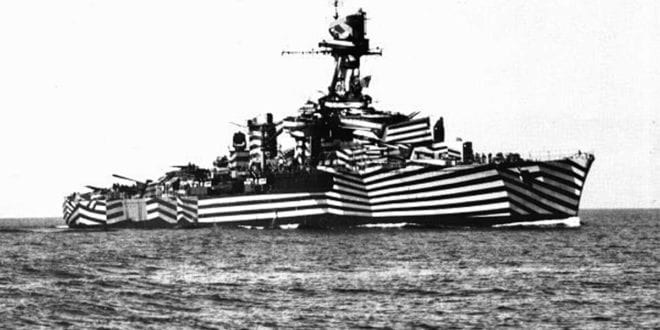
Efforts to disguise ships were inescapable during World War I and WWII. In the 1914-1918 clash, painting vessels dark decreased perceivability, yet it didn’t generally work in consistently changing conditions and ocean conditions. The British wound up spearheading “Astonish” cover paint plans, utilizing intense stripes and splendid tones. The examples didn’t conceal the boat, however disturbed its blueprint to make it more hard to pass judgment on its size, speed, and heading. That made it more hard for the foe to precisely target it.
Astonish and other cover plans were additionally utilized in WWII, yet their utilization declined as the war advanced. Consistent advances in radar and reach discovering innovation consistently decreased boat cover’s adequacy. Be that as it may, from the get-go in the Pacific War, one Dutch warship, the HNLMS Abraham Crijnssen, pulled off one of history’s best boat covers: it masked itself as a tropical island. That permitted the Crijnssen to cruise undetected for many miles through Japanese-controlled waters, until it arrived at security in Australia.
Frail and Slow
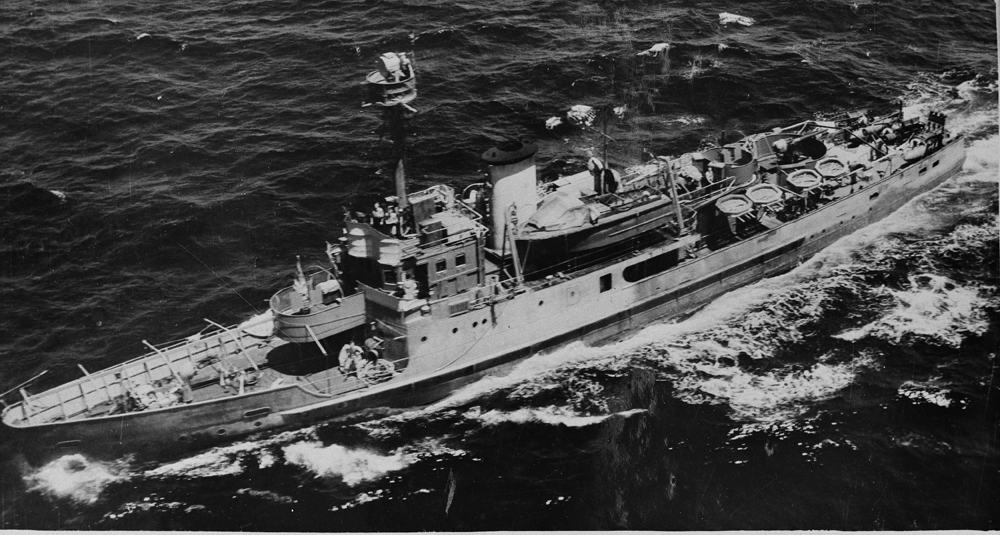
The Abraham Crijnssen was a Royal Netherlands Navy minesweeper that was implicit 1936. She wound up positioned in the Dutch East Indies, the present Indonesia, which is the place where WWII in the Pacific discovered her when Japan started threats in 1941. By warship principles, the Crijnssen was a minnow. Dislodging a simple 525 tons, run by just 45 men, and outfitted with a solitary 76mm firearm in addition to a couple of 20mm guns, she was completely unequipped for duking it out with the ground-breaking Imperial Japanese Navy sends that slipped upon the Dutch East Indies.
Her feeble punch was supplemented by low speed: her motors could push her at a greatest speed of 15 bunches. To put it plainly, the Abraham Crijnssen could neither battle nor escape if the Japanese saw her. At the point when you can neither battle nor escape, your smartest choice is to cover up. So the Crijnssen put every one of her eggs in the bin of dodging location no matter what.
Cut Off in Enemy Waters
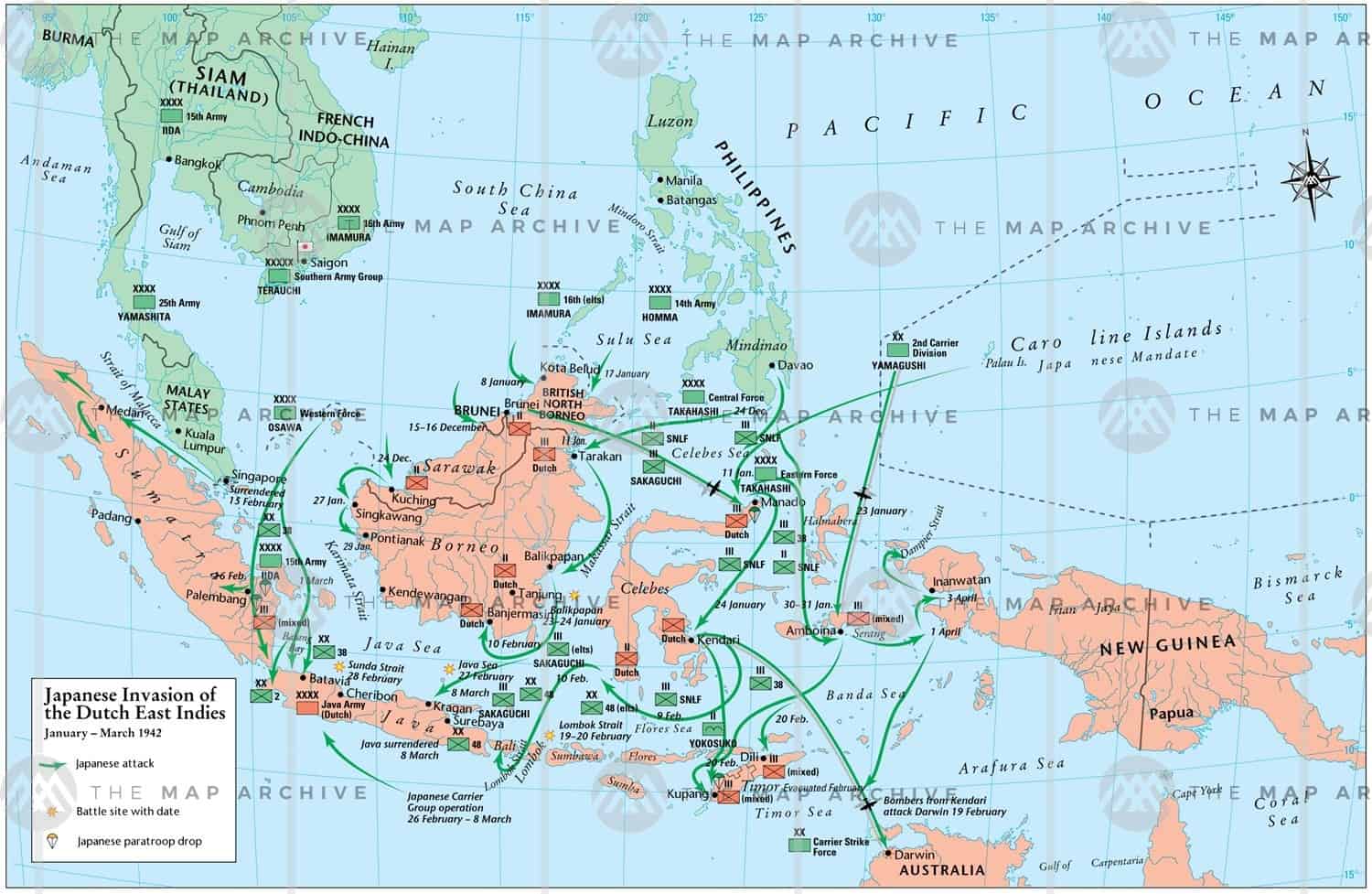
At the point when the Japanese commenced WWII in the Pacific, the Abraham Crijnssen was situated in Surabaya. Things got going terrible for the Dutch and the Allies, and before long went from awful to more awful. By February, 1942, following Allied maritime annihilations in the clashes of the Java Sea and the Sunda Strait, all Dutch and Allied boats were requested to clear the now-ungracious area and pull out to Australia.
The Crijnssen was initially expected to sail to Australia as a feature of a four-transport Dutch escort, yet the Japanese Navy sank the other three vessels, leaving the minesweeper to make her to security overall quite well, alone. Too powerless to even consider warding off Japanese warships or Japanese planes, the Crijnssen’s sole expect endurance lay in sorting out an approach to sneak past the foe without being spotted. The rich Dutch East Indies were specked with tropical islands, so the boat set out to disguise itself as a tropical island.
A Crazy Plan That Was Not So Crazy
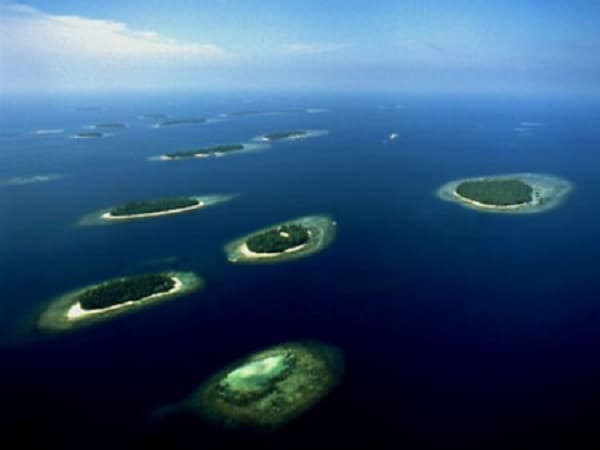
The Abraham Crijnssen’s arrangement to cover itself as a tropical island was not as insane as it appears from the start. The Java Sea, through which the boat needed to wend its approach to security, has more than 18,000 islands of fluctuating sizes, a large number of them simple bits with only a couple trees developing on them.
Estimating just 185 feet long, the Crijnssen was not a gigantic boat, but rather it was still large enough to make itself look like a little island if appropriately disguised. So the minesweeper visited the closest island, and its 45 man group started chopping down vegetation with a will.
Transforming a Ship Into an Island
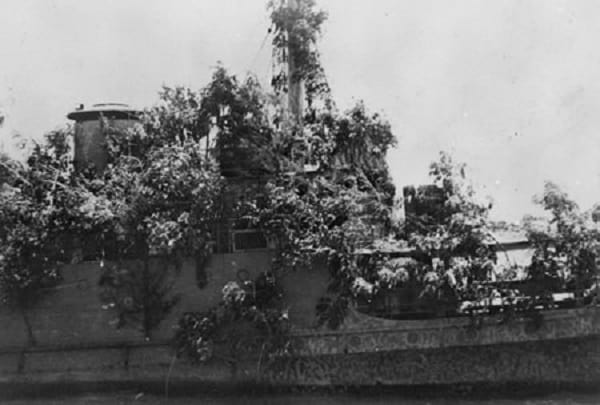
The fundamental recognition danger looked by the Abraham Crijnssen was getting spotted from the air by Japanese planes. So to adequately disguise the boat, its group expected to cover its whole surface territory with tropical vegetation and foliage. The outcome was one of the additionally captivating WWII endurance stories.
It was hard and backbreaking work, yet where there is a will, there is a way. With their lives on the line if the Japanese spotted them, the Dutch group had all the motivator on the planet to do whatever it took to stay away from identification. The Crijnssen’s deck was completely covered with vegetation, which was masterminded in such a route in order to mirror a wilderness shelter.
A Masterpiece of Camouflage
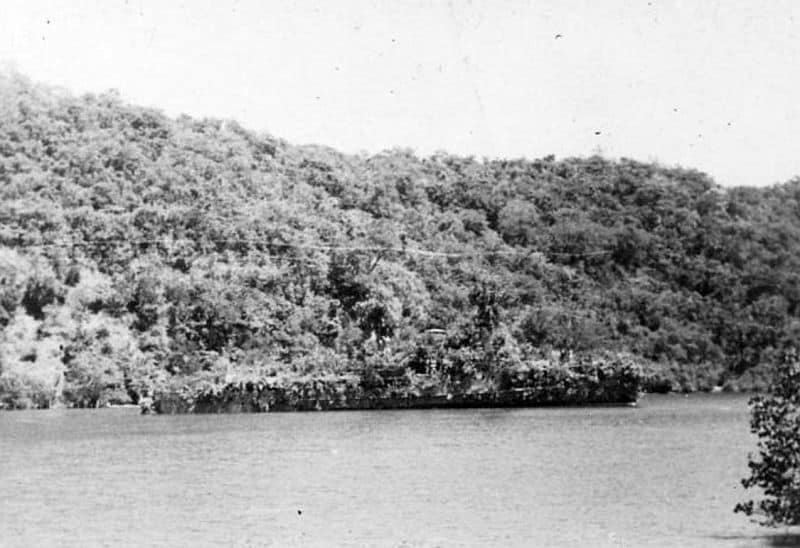
The difficult work of the Abraham Crijnssen’s team paid off. Between covering the whole deck with foliage, and painting any uncovered metal in shades of dark to emulate rock arrangements, the Dutch minesweeper figured out how to pull off a fair occupation of looking like an island. In any event from a good ways.
A critical distinction between a boat and an island, notwithstanding, is that the previous moves, while the last is fixed. The cover was proposed for the daytime, during which the Crijnssen stayed fixed, secured as close as conceivable to real islands. When haziness fell, the little boat would raise steam and cautiously wend her way through the perilous waters of the Java Sea, set out toward the wellbeing of Australia.
A Hair-Raising Journey to Safety
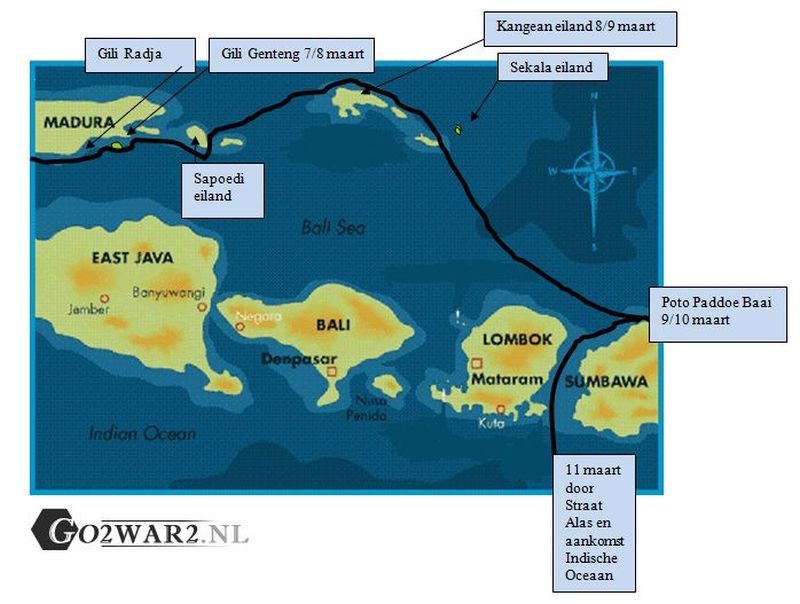
The Abraham Crijnssen’s flight was an excruciatingly moderate and unnerving difficulty. The team spent the sunlight hours at anchor, seeking divine intervention that that their boat’s disguise would hold up, and deflect recognition by the various Japanese boats and planes befuddling the Java Sea. When the Sun went down and the tropical night plunged, the little vessel pulled anchor and continued her excursion to security.
As the boat crept her way towards Australia, the team asked that the hints of the Crijnssen’s motors would not draw in the consideration of close by foe boats or watchers. Karma was with the brave Dutch minesweeper. After one of the more hair-raising excursions of WWII, which went on for eight horrendous days, she at last arrived at wellbeing. On March twentieth, 1942, the Crijnssen showed up in Freemantle, Western Australia.
Getting Back Into the Fight
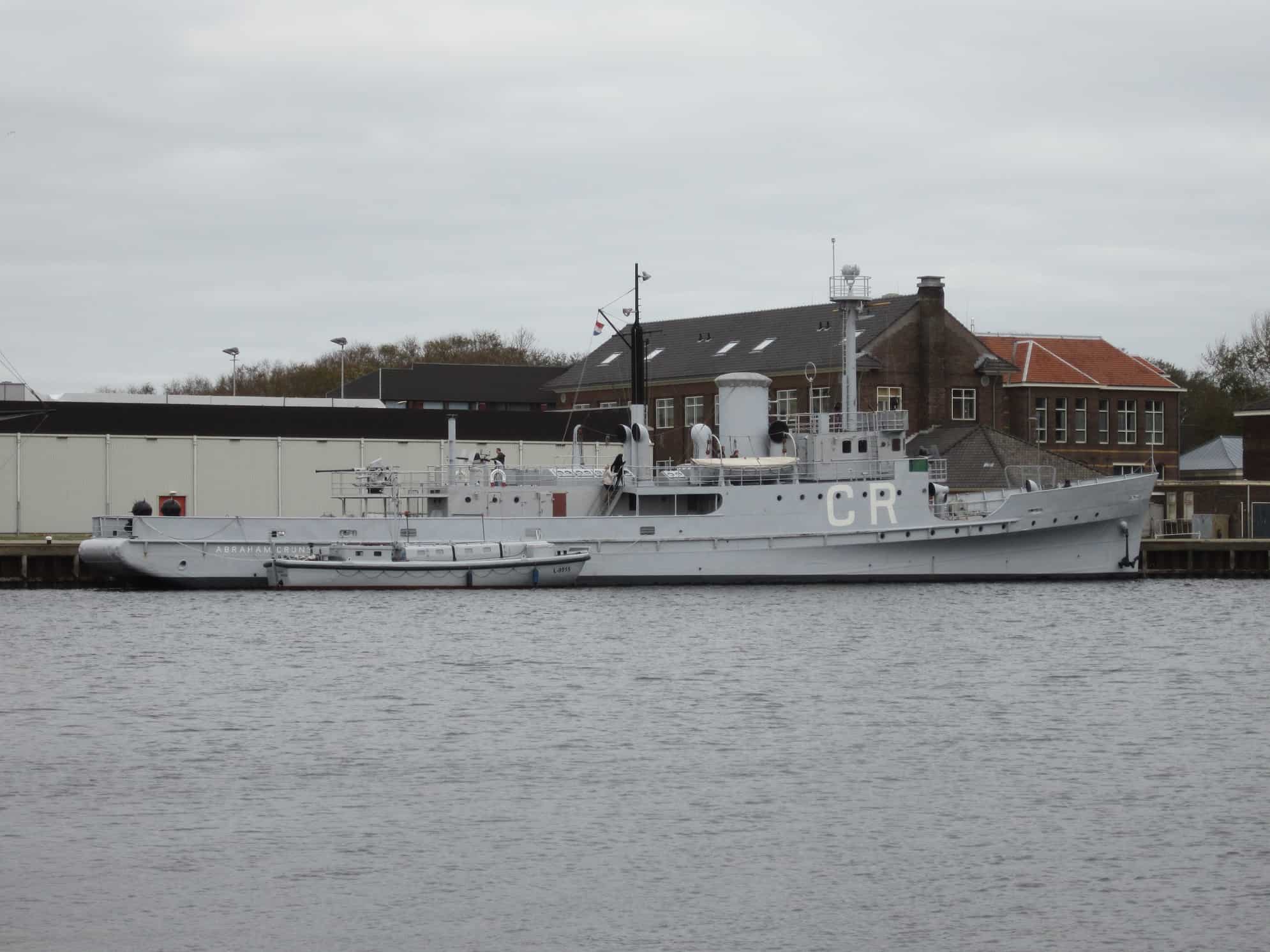
The Abraham Crijnssen was the last Allied vessel to effectively get away from the grievous thrashing in the Java Sea and the Dutch East Indies, and the solitary boat of her group to endure the fiasco. Once in Australia, she went through a refit, which incorporated the establishment of submerged identification hardware. In September, 1942, she was dispatched into the Australian Navy as an enemy of submarine escort, and served in that limit, with a blended Dutch and Australian group, for the rest of WWII.
Toward the finish of WWII, the Crijnssen was gotten back to the Royal Netherlands Navy, and watched the Dutch East Indies until they acquired their freedom. She at that point got back to Europe, and proceeded in assistance with the RNN until she was decommissioned in 1960. Throughout the following not many years, she filled in as a preparation transport, at that point as a capacity body, before she was at long last given to the Dutch Navy Museum in 1995. She was reestablished to her WWII arrangement, and can be visited today at anchor in Den Helder, in Northern Holland.
Prior to Pearl Harbor, There Was Taranto
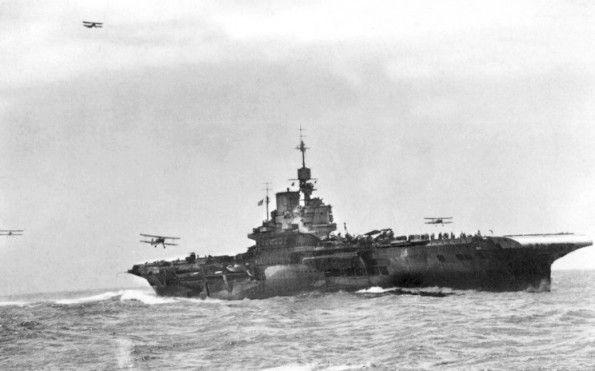
The Japanese assault on Pearl Harbor was not the first run through ever – nor even the first run through in WWII – that an armada at anchor was crushed by an unexpected assault from transporter dispatched planes. A year sooner, the evening of November 11-12, 1940, the British Royal Navy dispatched 21 old Swordfish biplane torpedo planes from the plane carrying warship HMS Illustrious against the Italian armada secured at Taranto. It was history’s first maritime commitment that depended upon transporter airplane to assault vigorously guarded warships, and was a pivotal occasion of the Royal Navy’s Fleet air arm.
Plans for assaulting the Italian armada in Taranto, which was very much situated to fight out and prohibit British lines across the Mediterranean, had been pondered by the Royal Navy for quite a long time before the episode of WWII. The most encouraging arrangement, codenamed Operation Judgment, required an assault by torpedo planes dispatched from a plane carrying warship.
The First Surprise Attack From Carrier-Launched Planes Against an Anchored Fleet
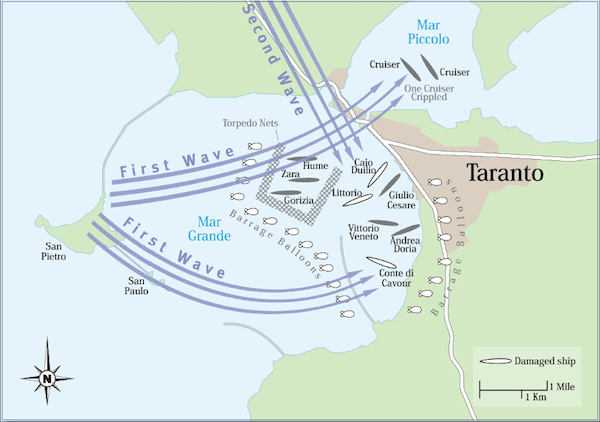
The Italian boats secured in Taranto were ensured by torpedo nets, encircled by flood inflatables and antiaircraft weapons, and imagined that they were resistant. They were most certainly not. In the days going before the assault, RAF photoreconnaissance affirmed the presence of the Italian armada in Taranto, and recognized the different boats’ areas, particularly the warships. Last plans were then shaped, and a strike power arranged.
A first flood of twelve Swordfish biplanes, half equipped with torpedoes and the other half with bombs and flares, were dispatched from the Illustrious at 9PM, November eleventh. an hour and a half later, they were trailed by a second influx of nine more Swordfish.
An Unheeded Lesson
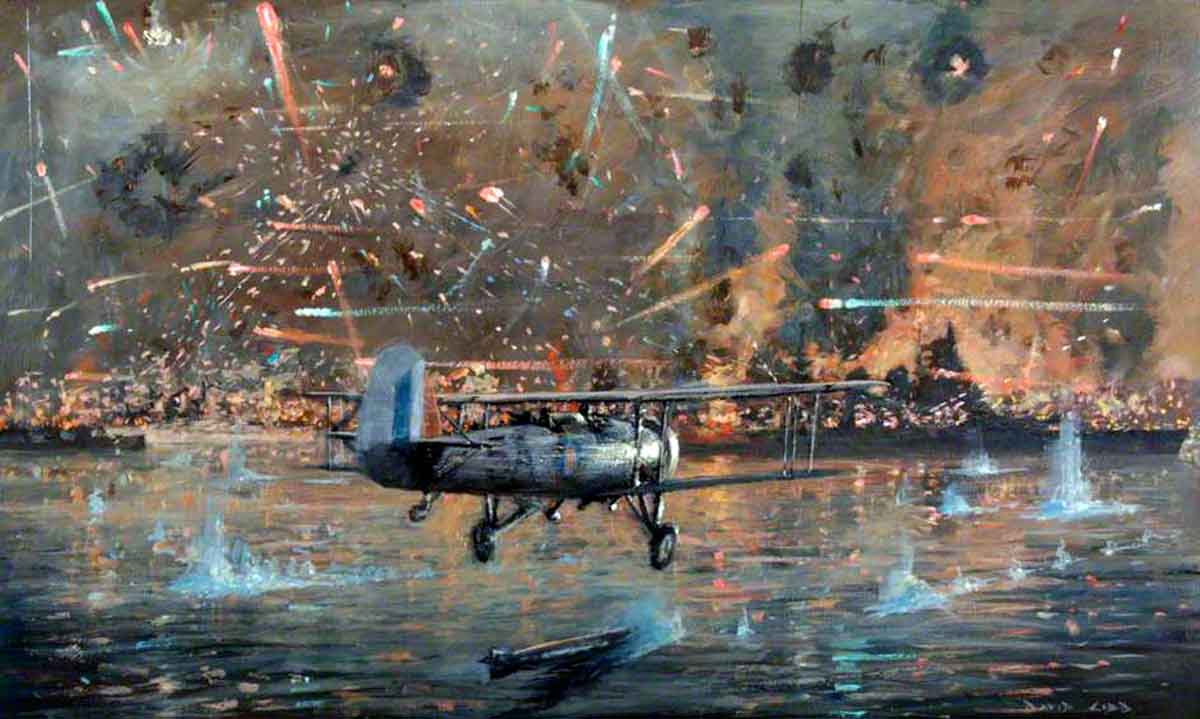
After arriving at Taranto, the main Swordfish dropped enlightenment flares, at that point besieged the port’s oil storage spaces. Meanwhile, other Swordfish dispatched torpedoes at moored war vessels. The subsequent wave showed up right away before 12 PM, dropped flares, and dispatched more torpedoes. In under two hours, the biplanes struck three warships and a few cruisers, and seriously harmed the port’s establishments, for the deficiency of two planes and four crew members.
It was quite possibly the best assaults of WWII. The Italians lost a large portion of their capital ships that evening, and the next day, moved their enduring boats to the more prominent wellbeing of Naples. The strike altered fighting, and changed the course of history by introducing the command of maritime flight and the plane carrying warship over war vessels. Different naval forces took a distinct fascination for what the British had done at Taranto, and Japanese spectators of the Imperial armada specifically gave close consideration. US Navy onlookers didn’t, to America’s burden a year later at Pearl Harbor.
The First Installment on the Payback for Pearl Harbor
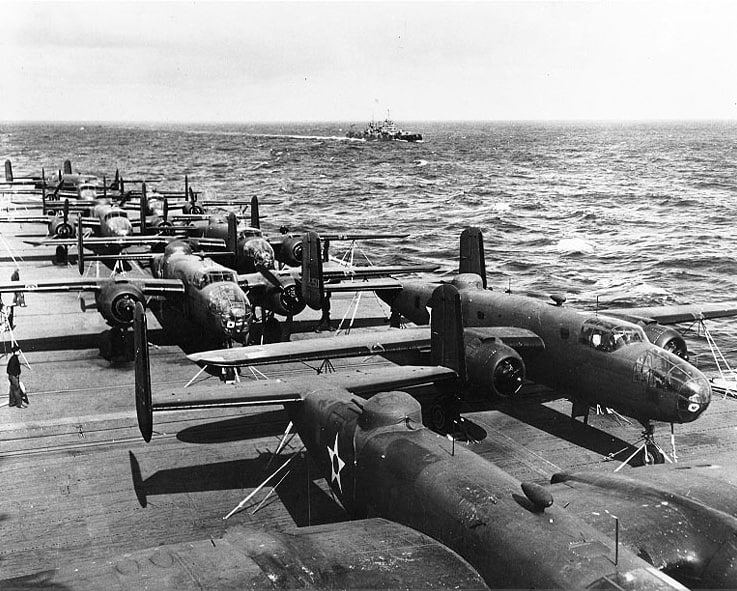
It was the morning of April twelfth, 1942, five months after America was pushed into WWII. As the Sun pursued away the Pacific evening, sailors on board the plane carrying warship USS Enterprise and her accompanying team, which had recently connected up with the transporter Hornet north of Hawaii, were frightened to see the Hornet’s flight deck packed with weird planes. They were greater than anything seen before on the deck of a US Navy plane carrying warship. The planes were B-25 Mitchell medium aircraft, and the challenging assault they did a couple of days after the fact was to be their first significant battle activity.
The assault came about because of President Roosevelt’s craving, communicated not long after the Pearl Harbor assault, that Japan be bombarded straightaway to help public spirit. At that stage in WWII, America had no airbases sufficiently close to bomb Japan. So an arrangement was incubated to bring an ad libbed airbase, a plane carrying warship, close enough for changed B-25 aircraft to strike the Japanese country. The outcome was the Doolittle Raid.
An Early Launch
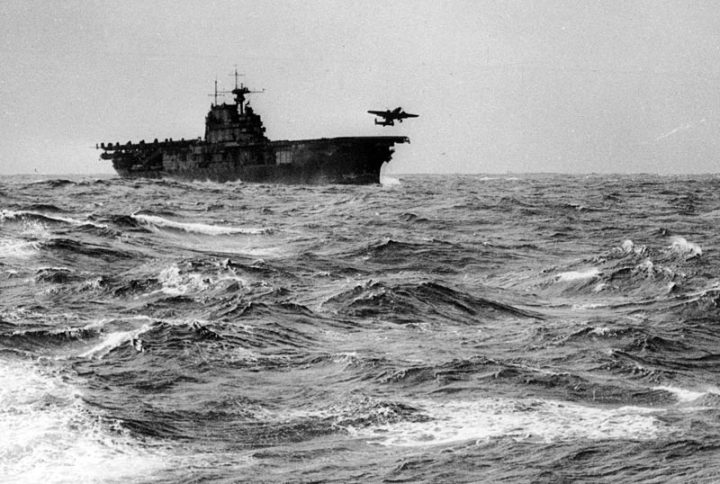
Execution of America’s first attack against Japan was endowed to US Army Air Force lieutenant colonel James “Jimmy” Doolittle, who started preparing select aircrews on short departures. Taking off from plane carrying warships was a stretch for the medium aircraft, and arriving back on their flight work areas was an inconceivability. The arrangement was for the planes to drop their weapons on focuses in Japan, at that point proceed on toward the west to land in China.
On the morning of April eighteenth, 1942, the team was located by a foe picket boat, 750 miles from Japan. The picket boat was immediately sunk, yet not prior to sending a radio message. Dreading loss of the component of the astonishment, it was chosen to dispatch the aircraft promptly, 10 hours sooner and 170 miles further from Japan than at first arranged.
Causing some serious problems

Sixteen B-25s, equipped with a blend of 500lb bombs and combustibles, ambled off the Hornet and, flying low to stay away from recognition, winged their approach to Tokyo. They showed up around early afternoon, and besieged military and mechanical targets. 15 aircraft made it to China, where they crash-landed, while another advanced toward Vladivostok, where it and its group were entombed by the Soviets.
Of eighty B-25 crew members, three were murdered, and eight were caught by the Japanese. Of the hostages, three were executed, and another kicked the bucket while a POW. The strike caused minimal actual harm, yet the mental effect was gigantic on the two sides of the Pacific – enough to modify the course of WWII. Doolittle’s attack caused the Japanese central leadership extensive loss of face. They looked to recover by putting into action intends to hold onto Midway Island, which prompted a cataclysmic Japanese annihilation at the Battle of Midway half a month later.
The Most Infamous Traitor of WWII

Vidkun Quisling (1887 – 1945) was a Norwegian armed force official and traditional legislator who drove a fundamentalist gathering during the 1930s that met with little achievement. He deceived his country to the Nazis during WWII and worked together with its German champions. After at first dismissing him right off the bat in their occupation as excessively dingy in any event, for them, the Nazis at long last yielded to Quisling’s supplications, and set him accountable for a manikin government.
Destined to a minister, Quisling’s life had a promising beginning that give little trace of coming disgrace. He did well in school, and moved on from the Norwegian Military College with the most elevated actually score since its commencement. He was shipped off the USSR as a military attache in 1918, and turned into Norway’s military master on everything Russian. In 1922, he chipped away at League of Nations helpful aid projects in the Ukraine, and showed extensive managerial ability and expertise. While there, he additionally met and wedded two Russian ladies one after another, the subsequent marriage, which went on until his passing, either bigamous or informal.
The Norwegian Would-be Fuhrer
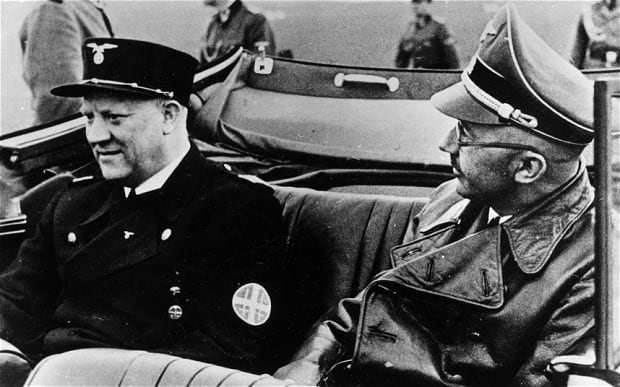
Released from the military during a time of reductions, Quisling went all through Europe for a large part of the 1920s. Getting back to Norway in 1929, he dispatched a political profession set apart by against Semitic, anticommunist, and hostile to liberal positions. Joining a development called “Ascent of the Nordic People”, he turned into Norway’s safeguard serve from 1931-1933. In 1933, motivated by the Nazis’ triumph in Germany, he dispatched an extremist gathering, designating himself its Fuhrer.
Not at all like Germany’s Nazis, notwithstanding, Quisling’s gathering always lost over 2% of the vote in Norway. That left him progressively unpleasant and disappointed with his kinsmen. In late 1939, he traveled to Berlin, met with Hitler, and offered to help the Germans in the event that they attempted to hold onto Norway. The Nazis, mindful of his absence of help in Norway, were reserved. At the point when Germany hauled Norway into WWII by attacking in 1940, the Norwegian government fled into oust. Quisling, artfully, attempted to set up a collaborationist government. Notwithstanding, he was at first overlooked by all, including by the German occupiers.
Battling to Get Taken Seriously as a Traitor
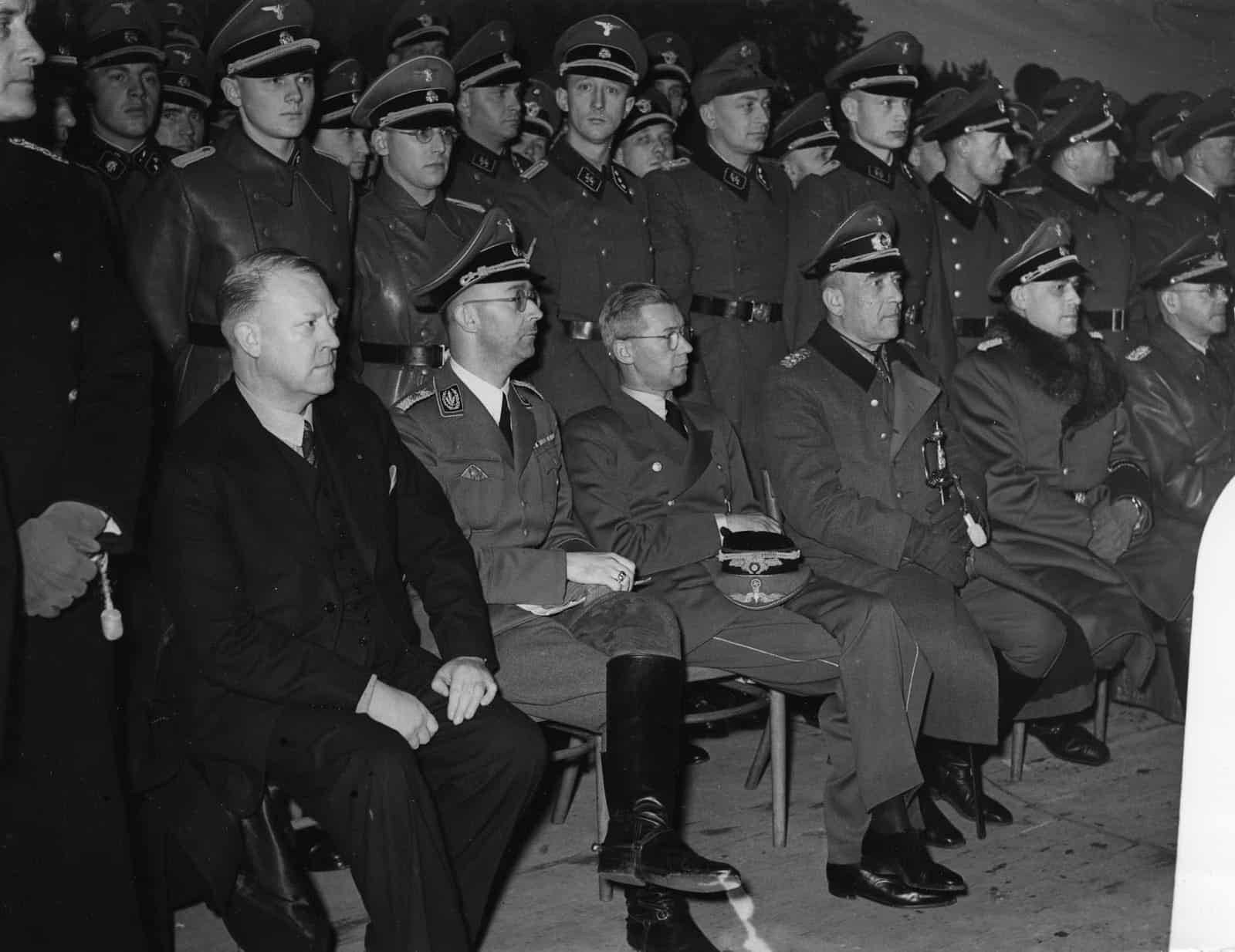
It required two years of coaxing before the Nazis at long last perceived Quisling in 1942 as Norway’s “Pastor President” of a manikin system. In that position, he did everything he could to please his lords, remembering anxious collaboration for their extradition of Norway’s Jews to concentration camps. Caught after the finish of WWII, Quisling was attempted by the Norwegians. Sentenced for treachery, murder, and theft, he was executed in October, 1945.
Quisling’s name got inseparable from coordinated effort and conspiracy. Right up ’til today, a “Quisling” is regularly utilized as a designation to indicate not an average backstabber, for example, e.g.; considering someone a “Benedict Arnold”, however a deceiver of the least, grubbiest, and most disgusting kind. The kind of backstabber who reigns over and quells his own kin for an overcoming adversary, ever anxious to satisfy the unfamiliar occupier with improper showcases of kowtowing slavishness.
The Chinese Quisling

Wang Zhaoming, better known by his pseudonym, Wang Jingwei (1883 – 1944), was a Chinese legislator who had been a partner of the progressive patriot pioneer Sun Yat-sen. After Sun Yat-sen’s demise, Jingwei turned into a noticeable pioneer in the left wing of the Chinese decision party, the Koumintang (KMT), from which flank he challenged administration of the KMT with its chief, Chiang Kai-shek.
A bombed cooperation with the socialists debilitated Jingwei strategically, and upset him such a lot of that he deserted the left inside and out. He turned into a crazy conservative, turned backstabber, and during WWII, worked together with the attacking Japanese against his own kin.
Dropping Out With Chiang Kai-shek
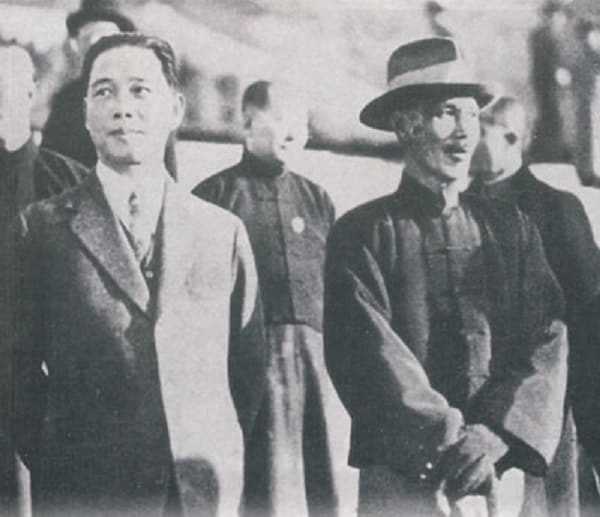
Wang Jingwei had been among the brilliant Chinese understudies sent by the perishing Qing line to concentrate abroad, and he went to college in Japan. There, he joined revolutionary patriot Chinese understudy circles, self-recognized as a rebel, and turned into a devotee of Sun Yat-sen. Getting back to China, he turned into an unmistakable speaker for Chinese patriotism, and was imprisoned for plotting to kill the Qing official. Liberated in the Chinese Revolution of 1911, which got rid of the Qing tradition, he arose out of prison a public saint.
The 1911 Revolution and oust of the supreme framework prompted a disorganized time of warlord rule. A patriot party, the Koumintang, was shaped to reestablish request, and in 1925 sent what was known as the Great Northern Expedition to handle the warlords and reestablish the focal government’s position. Jingwei became director of the public government, yet Chiang Kai-shek, the fruitful general who drove the mission against the warlords, framed an adversary government in southern China.
Falling In With the Communists, Then With the Japanese
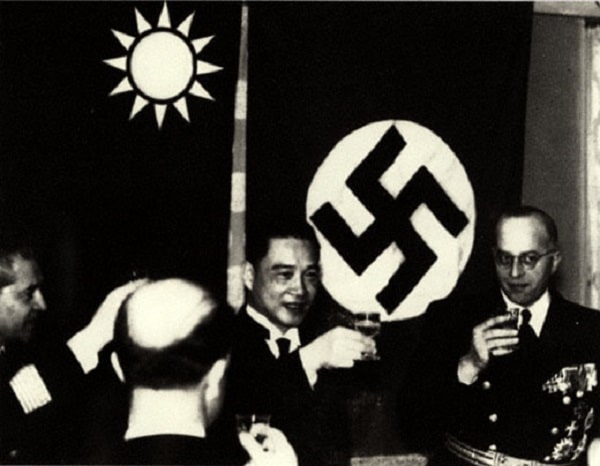
Wang Jingwei framed an administration in northern China in a joint effort with the socialists. In any case, he ultimately dropped out with the socialists and cleansed them, so, all in all his administration fell and his allies rushed to Chiang Kai-shek. Unpleasant, Jingwei turned into an extraordinary conservative. At the point when the Japanese attacked China in 1937, he traveled to meet their agents in Hanoi, and gave a presentation calling for tranquil exchange with the intruders.
In 1939, he traveled to Japan for dealings, and keeping in mind that there, double-crossed China and arranged an arrangement for his own sake. In 1940, he deserted and was named by the Japanese to head a manikin system, situated in Japanese-involved Nanking, that ostensibly “administered” the Japanese-vanquished domains in China. During WWII, he remained Japan’s Chinese manikin ruler until his demise in 1944.
The Serbo-American
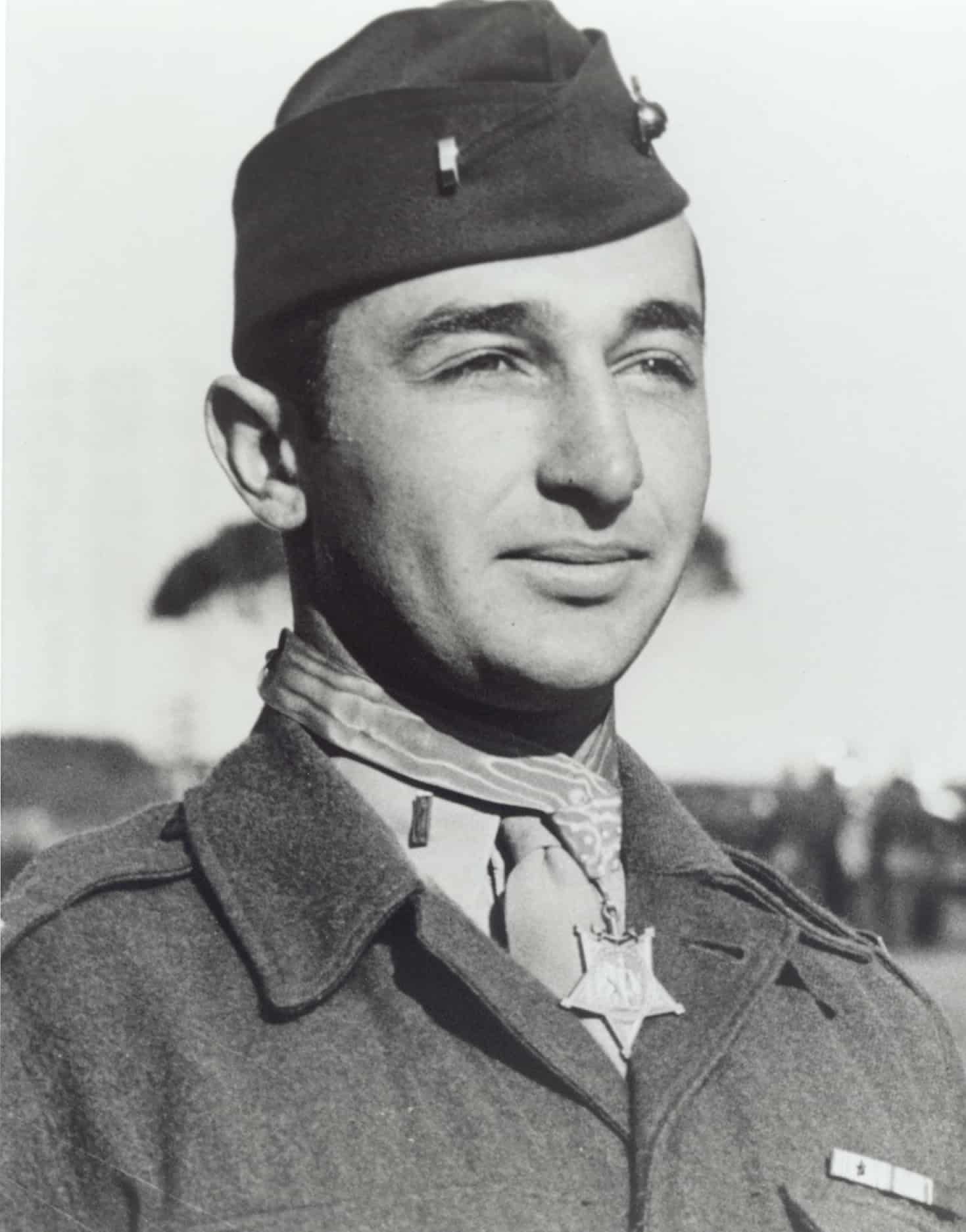
Mihajlo Pejic, who might later anglicize his name to Mitchell Paige, was brought into the world in Pennsylvania in 1918, to Serb settler guardians who hailed from what had been the Austro-Hungarian Empire. As Paige would later describe, his mom had raised him and his sibling as glad Americans, while keeping them mindful of and in contact with their Serb ethnic roots.
From youth, as he reviewed, he grew up with accounts of Serbian accomplishments of valor and opposition, dating from as far back as the 1389 Battle of Kosovo. Burning-through such military legend as consistent passage at home, it was nothing unexpected that Paige grew up with a craving to join the military. As a little youngster, he watched a motorcade that highlighted gladly walking US Marines. Without further ado, he decided to join the Corps when he was mature enough.
Strolling 200 Miles Just to Enlist

Mitchell Paige graduated secondary school in 1936, and later that late spring, he strolled around 200 miles from his Pennsylvania old neighborhood to the Marine selecting focus in Baltimore, Maryland, where he enrolled. It was the beginning of an excursion that would lead him to a WWII Medal of Honor. After training camp in Parris Island, SC, and further preparing, he wound up as a heavy weapons specialist on board the ship USS Wyoming, which at last took him toward the West Coast and the Pacific.
Paige’s spell on board the Wyoming was trailed by a progression of inland obligation tasks, that took him from San Francisco to the Philippines and in the long run to China. During that period, he played for the Navy-Marine ball club, which acquired some prestige in the second 50% of the 1930s, and furthermore took a stab at boxing. In 1939, he participated in American debacle aid projects in China, following calamitous flooding that crushed the Tianjin district.
Sergeant Paige Heads to Guadalcanal

1940 saw Mitchell Paige back in the US, where he served in the Navy Yards at Brooklyn and Philadelphia. He at that point joined the fifth Marine Regiment, and partook in preparing activities and moves in Cuba and Puerto Rico. Paige was moved back to the US in 1941, as a feature of the underlying unit that set up another preparation base for the Marines at Camp Lejune, North Carolina.
After the Japanese assault on Pearl Harbor later that December push America into WWII, Paige was gotten back to abroad obligation, this time with the seventh Marine Regiment. By 1942, Paige had been elevated to sergeant, accountable for his own company. In September of that year, he and his unit set out toward Guadalcanal in the Solomon Islands. There, inside half a month of appearance, USMC Sergeant Mitchell Paige would acquire his place ever.
Holding onto an Airfield
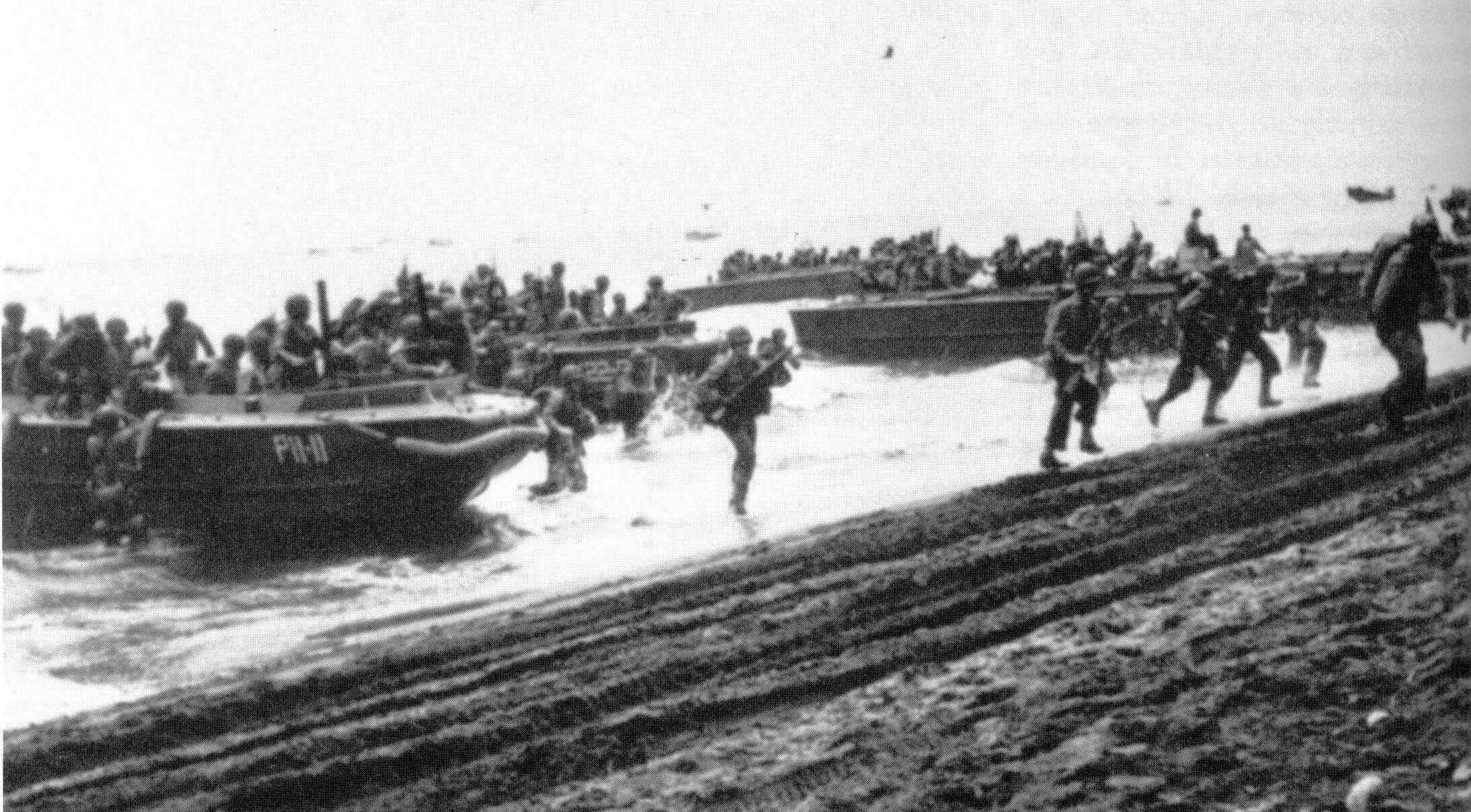
1942 had been a by and large dismal year for America and her partners in the Asia-Pacific Theater, soothed exclusively by the maritime triumph at the Battle of Midway that June. The rampaging Japanese commenced WWII in the venue by going crazy, catching the Philippines, the Malay Peninsula, Singapore, Hong Kong, Burma, Wake in addition to various other Pacific islands, a lot of New Guniea, and were compromising India and Australia. Things started looking significantly grimmer when news showed up that the Japanese were occupied with building an air base in Guadalcanal, one of the Solomon Islands in the South Pacific.
In peacetime, there was nothing critical about the Solomons, yet in wartime, they turned out to be crucially significant. Japanese long-range airplane working out of Guadalcanal could upset correspondences and supply lines among America and Australia, and that was unsatisfactory. So it was chosen to hold onto the island before the Japanese landing strip got operational. Surged arranging was trailed by a hurried Marine intrusion in August, 1942, that found the adversary napping and held onto the almost finished landing strip. It was swiftly finished by its new proprietors, and opened up for business as Henderson Field, named to pay tribute to a Marine pilot.
With Chesty Puller
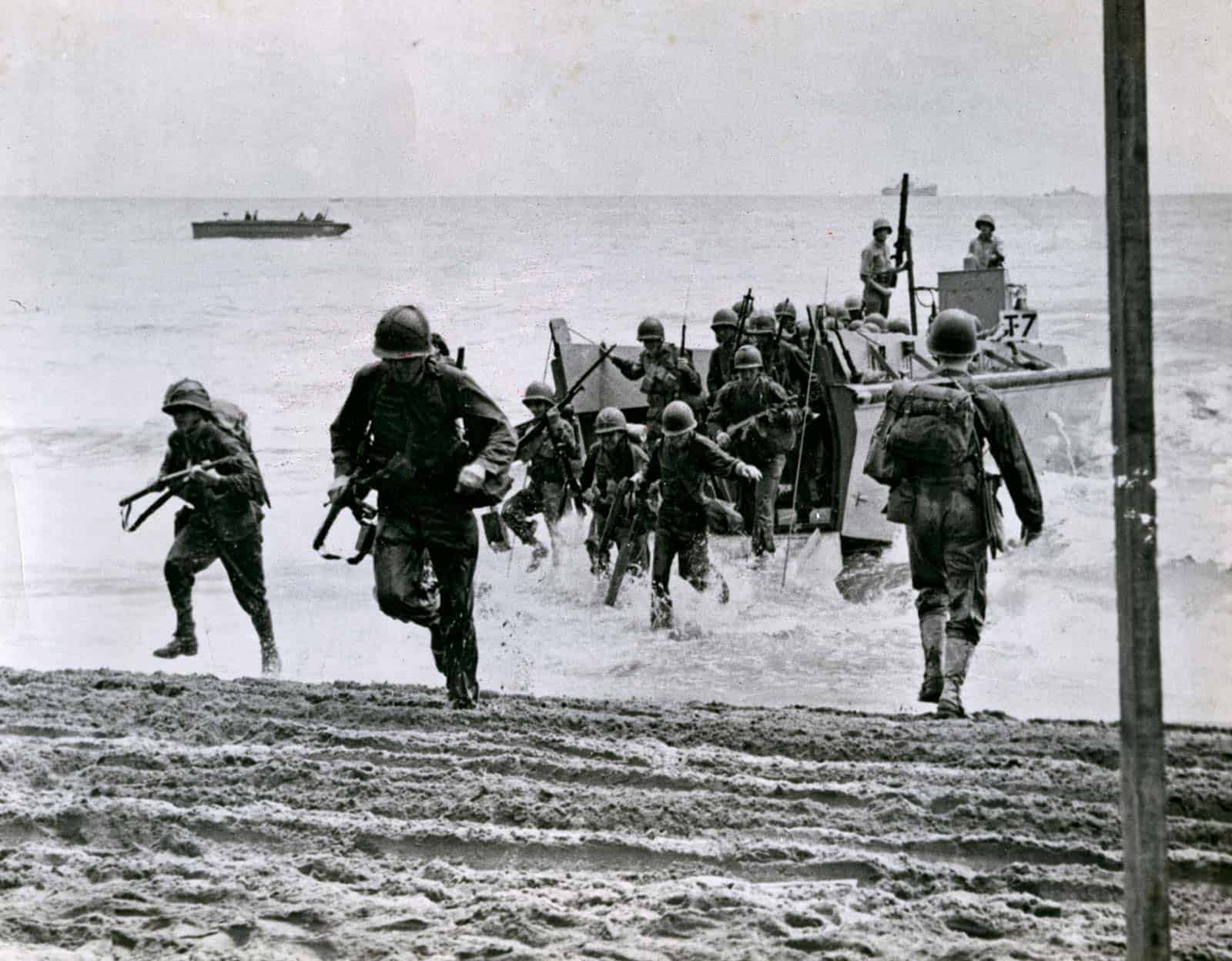
The intrusion of Guadalcanal got going admirably, however things before long got ugly. Mishaps adrift made the waters around the island excessively perilous for the US Navy, which swiftly evacuated. That left the Marines – who not yet handled every one of their weapons and supplies from transport ships – abandoned, similarly as the Japanese were surging in fortifications for a counterattack to recapture control of the island. What followed next were a long time of sheer terrible. Urgent Marines, upheld by an assortment of fearless aviators taking off of Henderson Field, shy of pretty much everything, warded off assaults by an adversary similarly edgy to dismiss them from Guadalcanal.
In September, 1942, Mitchell Paige showed up with the seventh Marine Regiment, under the order of unbelievable leatherneck Chesty Puller, to strengthen their hard squeezed brethren in Guadalcanal. During the evening of October 25-26, Paige and his company were delved into their foxholes, when he heard and saw indications of a hefty foe action and arrangements some place out in the black as night of the wilderness.
Withstanding Japanese Pressure
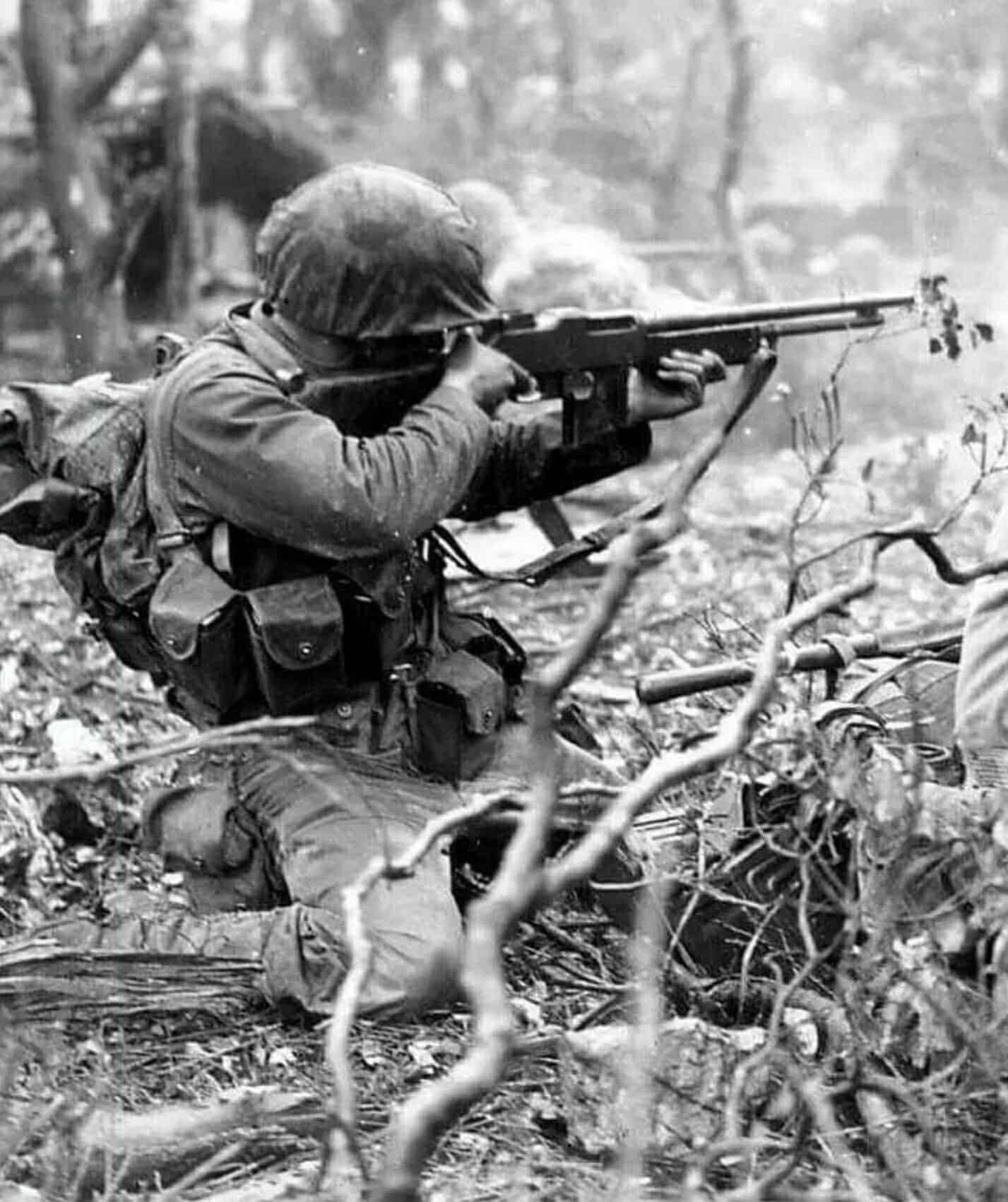
Accurately deciding that a Japanese night assault was underway, Mitchell Paige did what he could to prepared his men for the coming tempest. It broke in the early morning hours. At 2AM, October 26th, 1942, the wilderness night’s calm was broken by the clamor of fight. A huge number of Japanese from the sixteenth and 29th Infantry Divisions made a frantic offer to invade the seventh Marines, to catch Henderson Field. Their fundamental course went straight through the position involved by Sergeant Paige’s unit.
The following urgent battle was the perfection of the Battle For Henderson Field, October 23rd to 26th, 1942. It was the third significant hostile that tried to recover Guadalcanal, as the Japanese seventeenth Army made a urgent offer to blast through Marine and Army powers guarding the Lunga Perimeter, which secured Henderson Field. More than three days and evenings, the Japanese dispatched a progression of attacks around the American edge, every one of them beaten back with hefty misfortunes.
Battling Alone
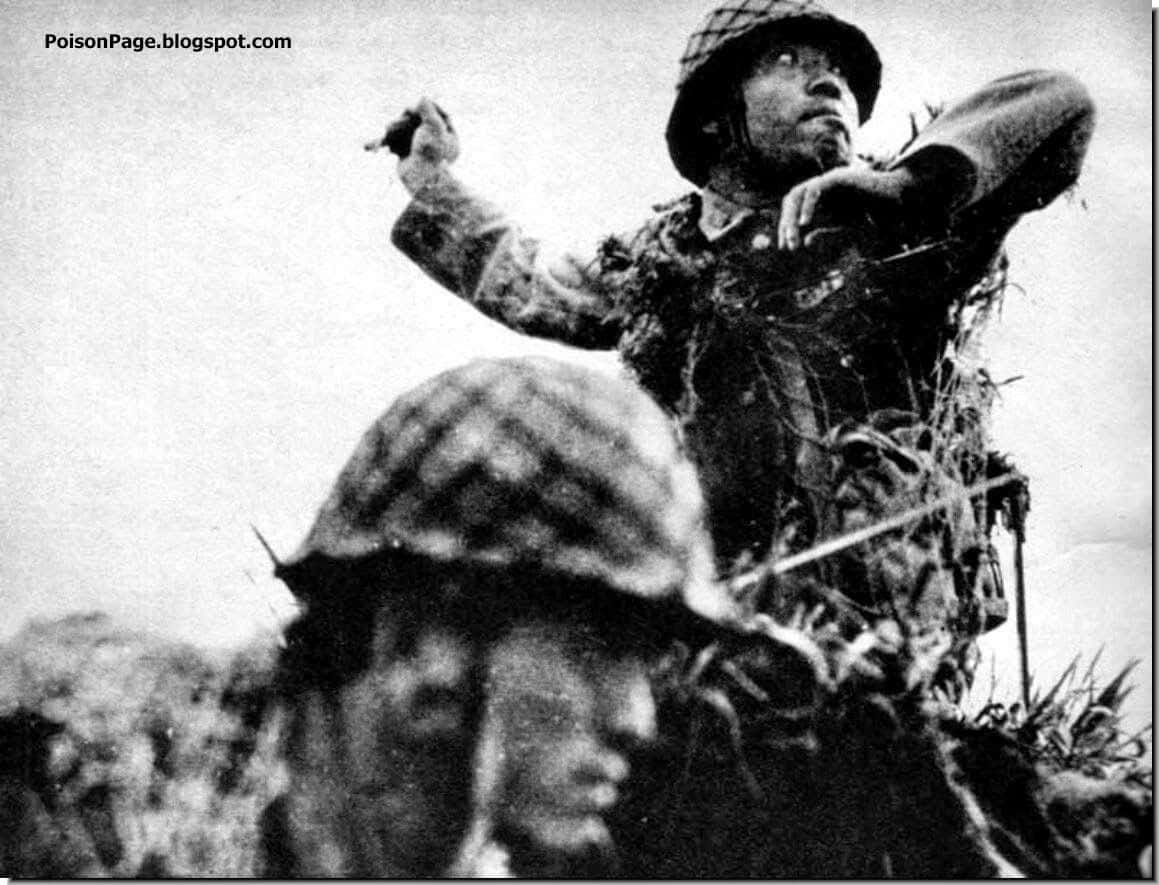
The most sensational of those attacks was presumably the one that occurred on the last evening of the fight, straightforwardly through Mitchell Paige’s unit. At the point when the charging Japanese drew inside a couple hundred yards of his position, Paige requested his men to start shooting. Automatic weapon and rifle shots cut down heaps of the foe, yet they overlooked their misfortunes, and squeezed their assault to Paige’s position. The battling before long plummeted into hand-to-hand battle, as Marines and Japanese infantrymen wrestled with one another in obscurity, wounding, clubbing, bayoneting, and here and there in a real sense battling like there’s no tomorrow by gnawing and tearing each other.
The main Japanese charge was repelled, however the relief was just impermanent. The principal assault was trailed by more influxes of over the top assailants. As the urgent night delayed, the unit to one side was overwhelmed, and his men wound up segregated. They fell consistently, executed or injured. In the end, Paige wound up as the sole survivor in his organization still on the fight line and fit for battling. So he battled on, alone.
A Desperate Last Stand
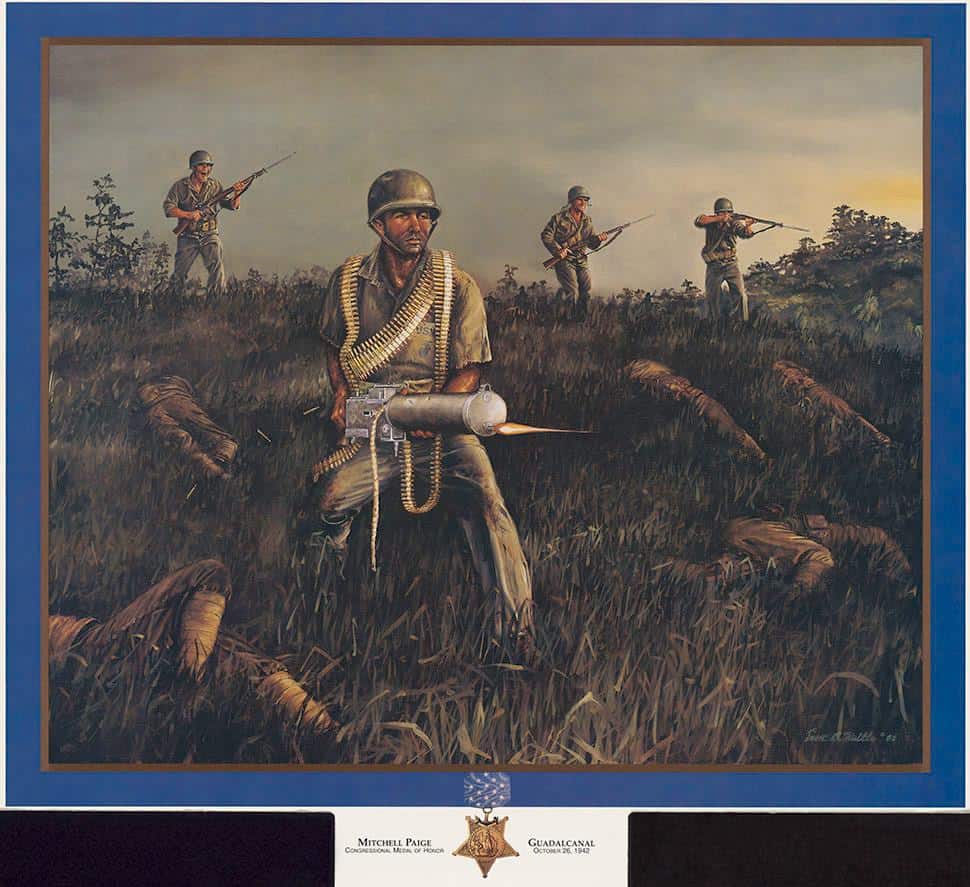
Mitchell Paige ended up monitoring an automatic rifle position without anyone else, that was encircled by a whole Japanese regiment. He continued emptying shoot into the adversary, until his automatic weapon was shot up and put down and out. So he overcame weighty shoot and got through adversary lines to an adjoining organization, appropriated one of their automatic weapons, and requested some sharpshooters to fix pikes and follow him.
Over the course of the following not many hours, Paige made an edgy last stand that saw him switching back and forth between four assault rifles, as each overheated or was generally put down and out. During that stretch, he without any assistance broke a Japanese assault that compromised his force’s base.
A Real Life Action Hero
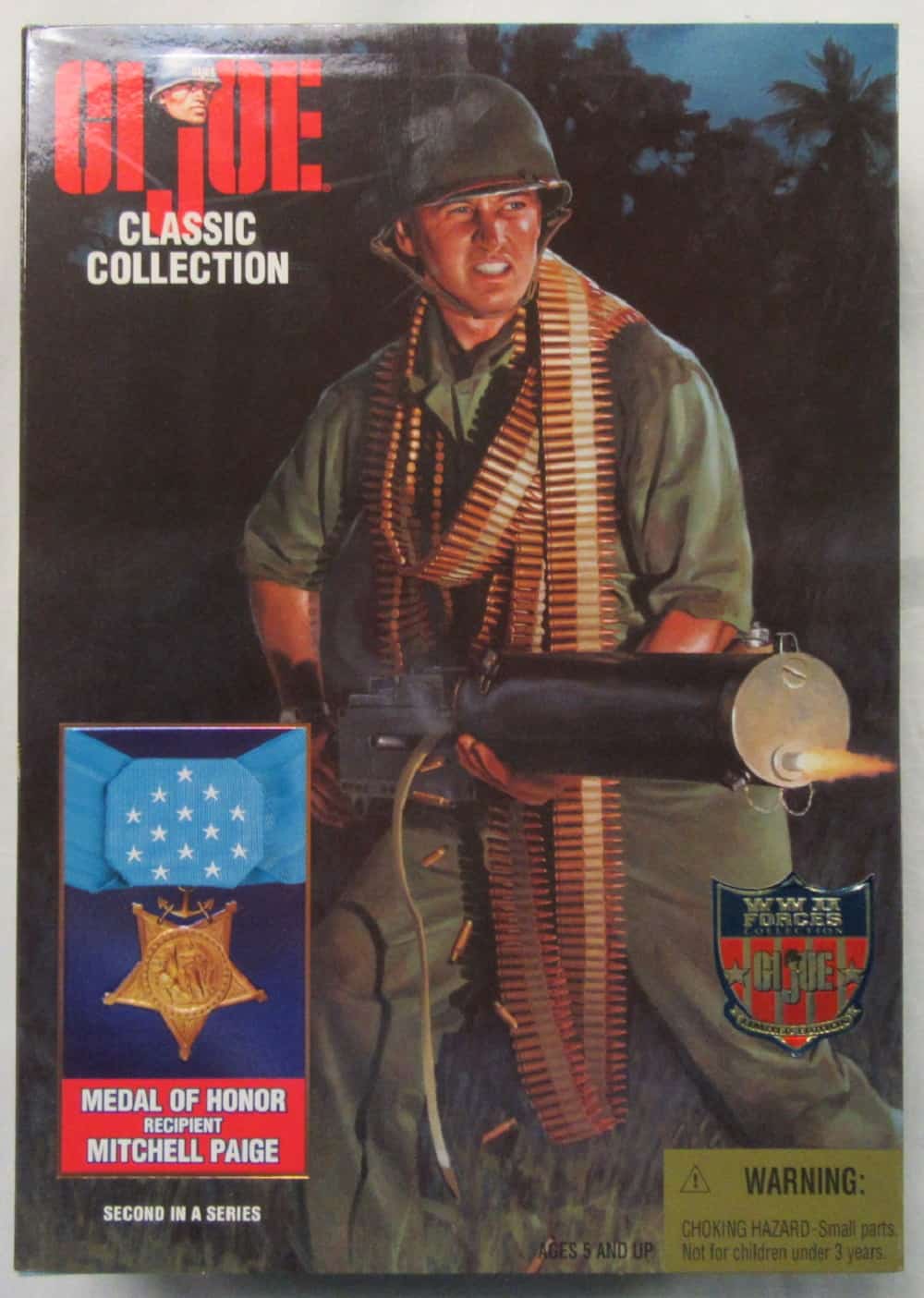
Subsequent to beating off one influx of aggressors, Paige snatched an assault rifle, and discharging it from the midsection like a Greatest Generation Arnold Schwarzenegger, ran after a slope to upset a Japanese effort to pull together. During that charge, a Japanese official exhausted a gun attempting to fire Paige, yet missed.
The Japanese official at that point drew his samurai blade, however Paige cut him down before he drew near enough to take a swing. All things considered, through a progression of individual heroics, Paige held his situation for ten hours, before fortifications at last showed up to balance out the line.
A Well-Earned Medal of Honor

Mitchell Paige’s endeavors acquired him the most elevated honor for bravery, and his Medal of Honor reference read: “For exceptional valor and obvious chivalry in real life well beyond what would have been acceptable anyway while presenting with the Second Battalion, Seventh Marines, First Marine Division, in battle against foe Japanese powers in the Solomon Islands Area on October 26, 1942. At the point when the foe got through the line straightforwardly before his position, Platoon Sergeant Paige, instructing an assault rifle area with intrepid assurance, kept on coordinating the discharge of his heavy weapons specialists until every one of his men were either executed or injured.
Alone, against the lethal hail of Japanese shells, he monitored his firearm, and when it was obliterated, assumed control over another, moving from weapon to weapon, enduring his wilting discharge against the propelling swarms until fortifications at long last showed up. At that point, framing another line, he boldly and forcefully drove a pike charge, driving the foe back and forestalling a discovery in our lines. His extraordinary individual fearlessness and unwavering commitment to obligation were with regards to the most elevated conventions of the United States Naval Service”.
Getting the Boys Back Home
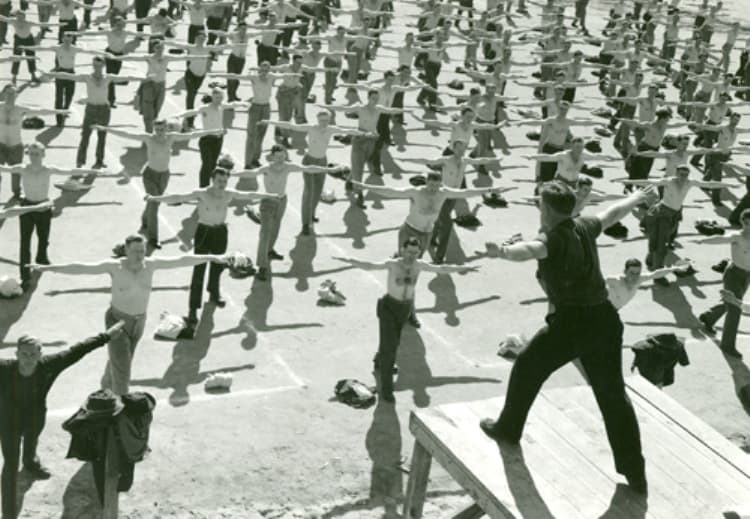
At the point when the firearms at last fell quiet and WWII reached a conclusion, more than 8,000,000 American servicemen were positioned abroad, dissipated everywhere on the globe. The battling was finished, and the time had come to bring our saints back home – legends whose excitement to re-visitation of non military personnel life was coordinated by the energy of their friends and family to see, contact, and embrace them indeed.
Keeping that in mind, Operation Magic Carpet was led to localize America’s young men to American soil. The gigantic calculated exertion was endowed to the War Shipping Administration (WSA). It was an organization made during the crisis of WWII to facilitate, supervise, and work America’s non military personnel delivering on the side of the war exertion.
Wizardry Carpet in Europe
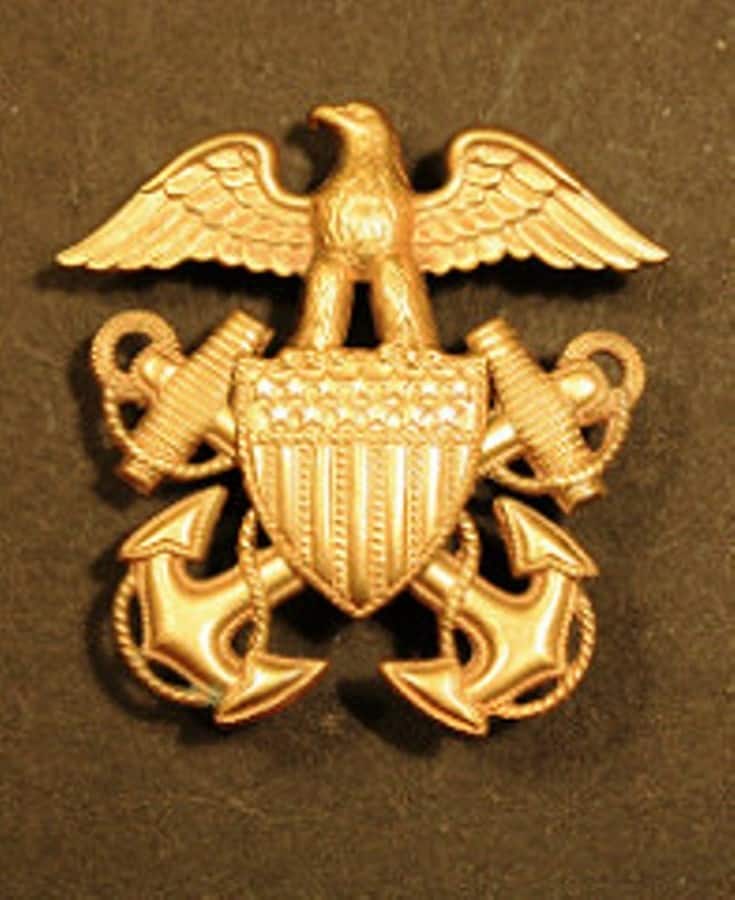
Getting ready for Magic Carpet started in 1943. Indeed, even as transports crossed the Atlantic, loaded down with the soldiers who might help free a landmass from the Nazi burden, the WSA and the War Department drew plans for their possible return. Need for bringing home toward the finish of WWII was controlled by the Advanced Service Rating Score. It was a hierarchy dependent on the rule that: “the individuals who had battled longest and hardest ought to be gotten back for release first”. Focuses were granted for quite a long time of administration, long periods of administration abroad, battle grants, and for subordinate kids. The more focuses scored, the more prominent the need for transportation home and release.
In readiness, the WSA changed over 300 payload ships into troop transports. Starting in June, 1945, inside a month of Germany’s acquiescence, the WSA started transporting American servicemen from Europe to the US. Following Japan’s acquiescence, the organization’s dispatch was stretched out to localize servicemen from the Asia-Pacific Theater also.
Accelerating Magic Carpet
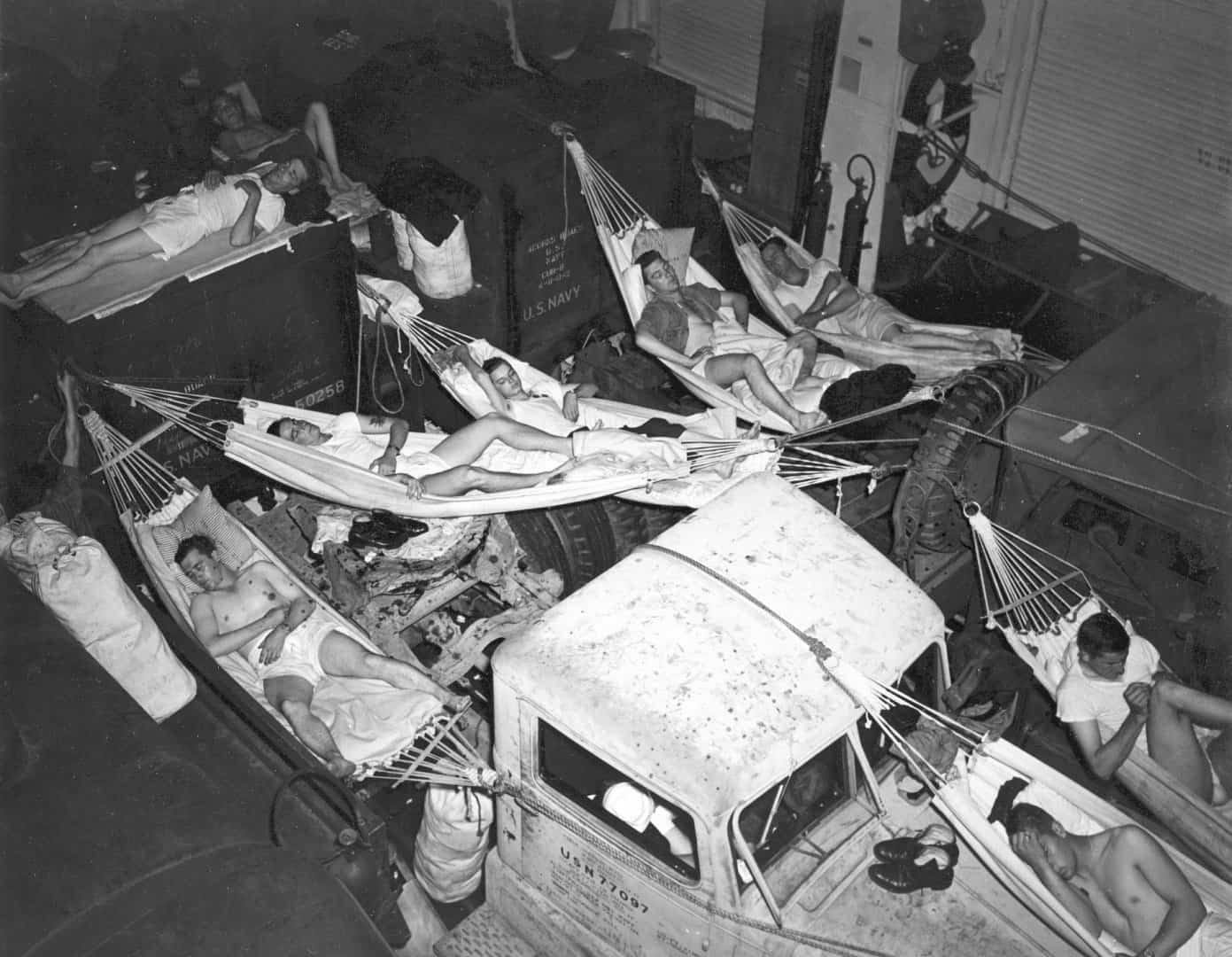
Sorcery Carpet started decisively when the primary boats set sail in June, 1945, from the European Theater and crossed the Atlantic, loaded down with returning servicemen. The American development in Europe had arrived at the midpoint of around 150,000 soldiers sent across the Atlantic every month. After the war finished, Magic Carpet switched the tide, returning American servicemen at a bewildering rate that found the middle value of 435,000 men for every month during a multi month stretch. A pinnacle was reached in December, 1945, when more than 700,000 staff were localized from the Pacific Theater alone.
To keep up the speed, the quantity of boats utilized consistently developed from the underlying 300 ordered by the WSA toward the beginning of the activity. The diverse armada went in size from little vessels with a conveying limit of just 300 soldiers, to behemoths, for example, the extravagance liners Queen Elizabeth and Queen Mary, changed over during WWII into troop transports equipped for conveying up to 15,000 servicemen. Among the vessels used were 48 clinic ships, to move over a large portion of 1,000,000 American injured. There were likewise 29 uncommonly charged vehicles, to transport the half million war ladies – European ladies wedded by American servicemen – to their new homes in the New World.
Wrapping Up the Repatriation from Europe
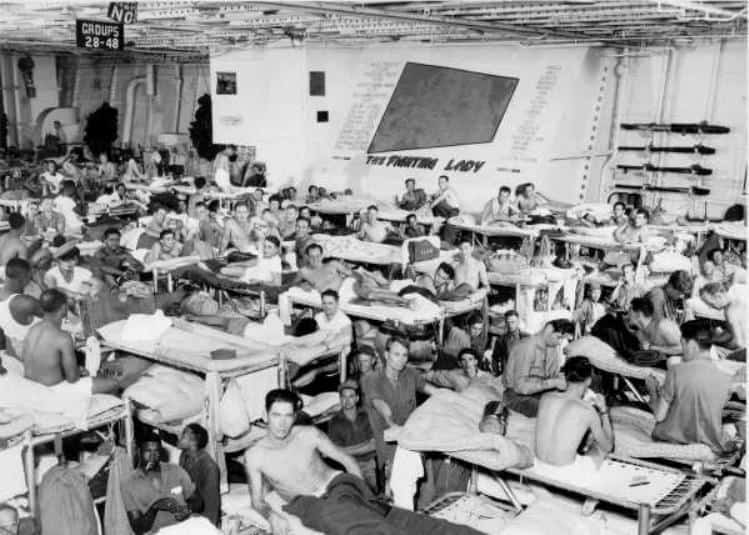
Entry times back home differed, contingent upon the servicemen’s area, just as the result of pure chance in the boats to which they were appointed. For instance, the USS Lake Champlain set an Atlantic intersection record in a simple 4 days and 8 hours. Conversely, others getting back from posts farther away, for example, India or Australia, could go through weeks or months adrift on board more slow vessels.
Overwhelming and intricate as it was, Magic Carpet was finished moderately rapidly. By September, 1945, 1.4 million servicemen, essentially every one of them from the European Theater, had been localized. By December first, 1945, the WSA had effectively localized over 3.5 million faculty. By February, 1946, bringing home from the ETO had, overall, been finished.
Wizardry Carpet in the Pacific
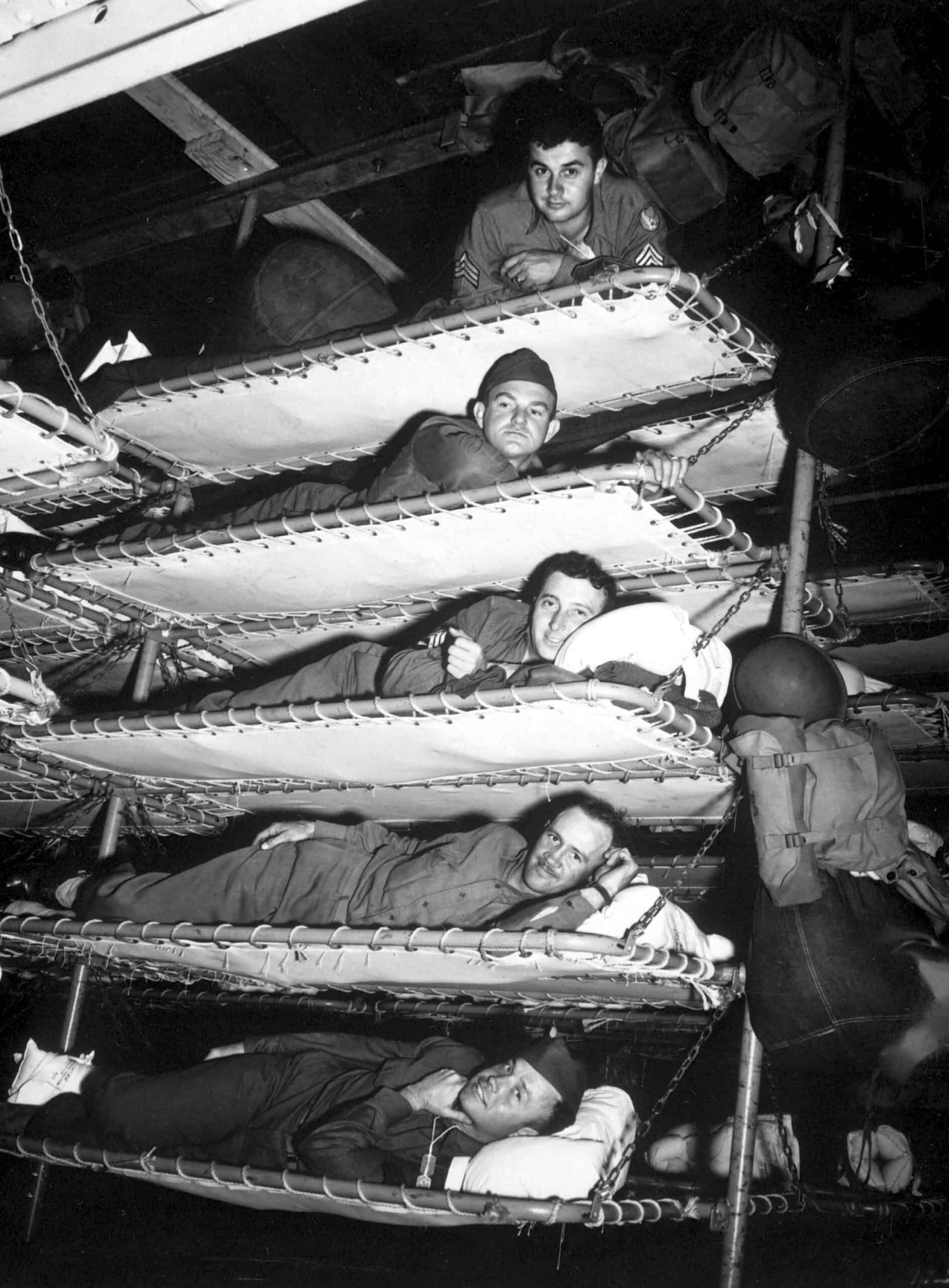
Bringing home from the European venue started generally easily: by 1945, both the US Army and the WSA were knowledgeable about the fast shipping of monstrous quantities of troops from bases on America’s East Coast to Europe. Switching the cycle was moderately basic. At that point the abrupt capitulation of Japan in August, 1945 messed up the works: WWII in the Pacific had been required to last well into 1946.
Thusly, bringing home of American powers from the Pacific had been unexpected in 1945. The battle against Japan finished just a short time after threats had closed in Europe, similarly as the WSA was amidst what by then was a generally enormous bringing home exertion from the ETO back to America. The specialists were gotten level footed: there was insufficient promptly accessible sealift ability to all the while localize a great many servicemen from both the European and Pacific theaters. Not so rapidly as the servicemen needed to get back, nor as fast as their friends and family and the American public requested that they be returned.
Transforming Warships Into Transports
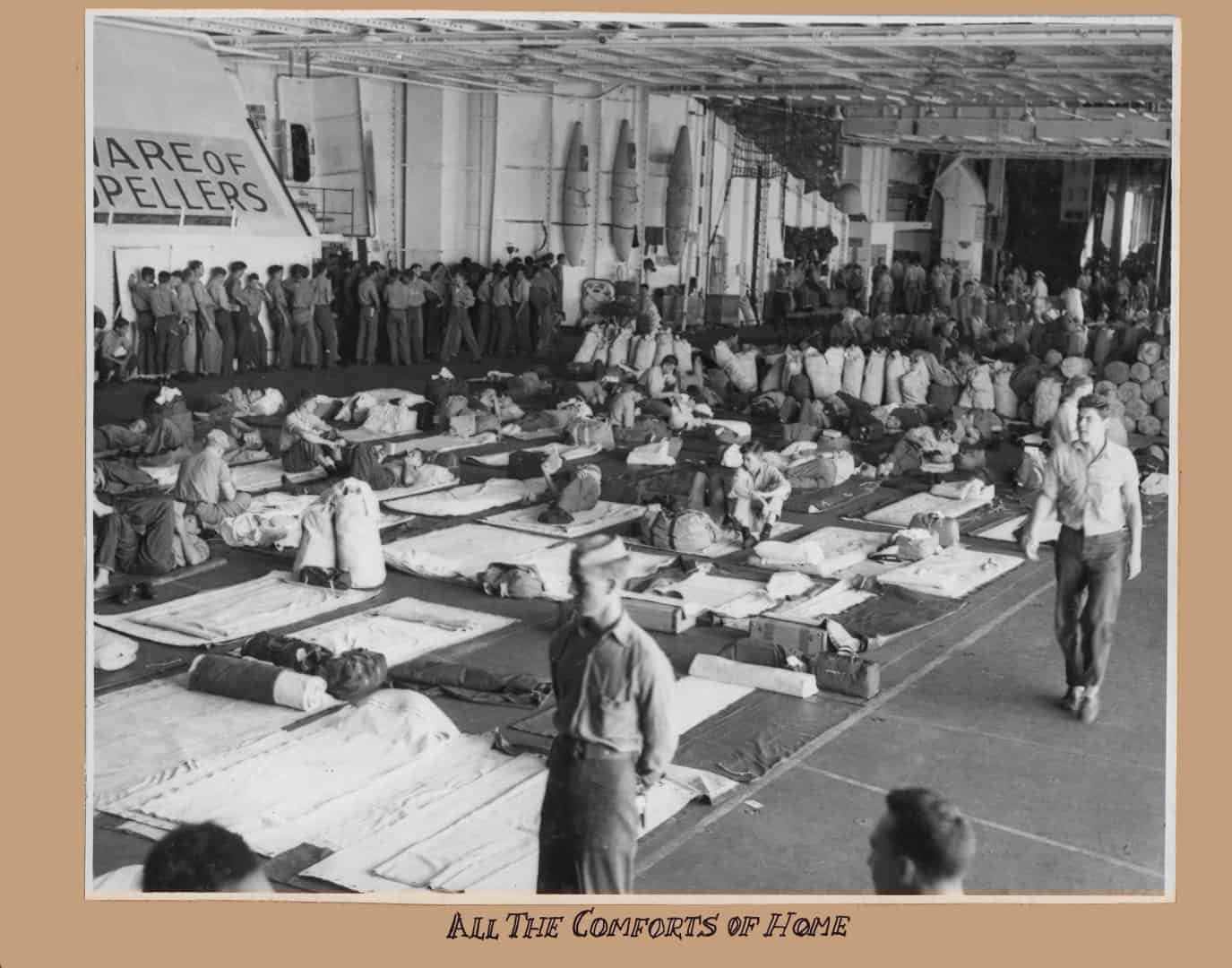
At the point when the WSA’s stock of promptly convertible freight boats couldn’t stay aware of the interest, the US Navy contributed. Ad libbing, maritime battle ships were assigned as troop transports. In this way, by regulatory fiat, the Navy redirected for use in Magic Carpet warships, for example, the Washington, West Virginia, and Maryland, and plane carrying warships, for example, the Enterprise, Saratoga, and the recently charged Lake Champlain. Plane carrying warships, with their enormous and open shed decks, demonstrated appropriate for the errand. Such maritime monsters were joined by various more modest vessels, going from cruisers to Landing Ship Tanks (LSTs) to destroyers.
Some battle ships were hastily retrofitted to fill in as transports, just like the case with plane carrying warships, in whose storages were shot or welded enormous cots. Other Navy vessels, especially more modest ones, for example, destroyers, were much of the time intrigued to fill in as transports as they were, with returning servicemen welcome to move for themselves, sending loungers at every possible opportunity, and managing by pressing into whatever little hiding spots and free space were accessible on board transport.
Safeguarding American POWs
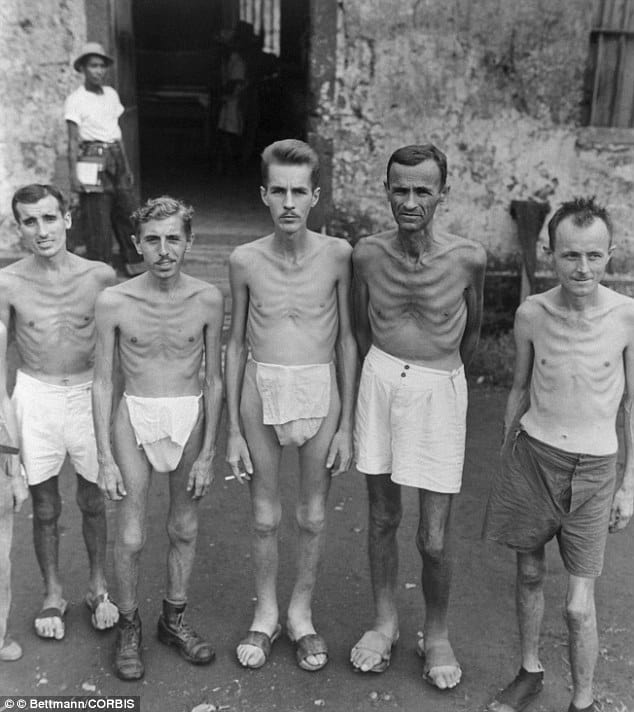
The Pacific bit of Magic Carpet involved additional layers of multifaceted nature, and, particularly toward the start, required more prominent dispatch than had been needed in Europe. Beside the Pacific’s immense distances contrasted with the European theater, there was the critical need to protect American POWs from the dispersed Japanese camps. There, American and Allied prisoners had grieved for quite a long time, frequently starved, abused, and in any case uncouthly abused by their captors.
When the truce was proclaimed in the Pacific on August fifteenth, 1945, ethereal surveillance missions were flown from US plane carrying warships to attempt to pinpoint POW camps in Japanese region. When found, airdrops of provisions, particularly food and medication, in some cases joined by fearless surgeons and specialists who elected to drop in, were directed to aid the malnourished and sick hostages. When the Japanese acquiescence was formally marked, and some of the time even previously, American POWs were recovered from Japanese bondage and, given a high need, gotten going on their long excursion home.
Activity Santa Claus
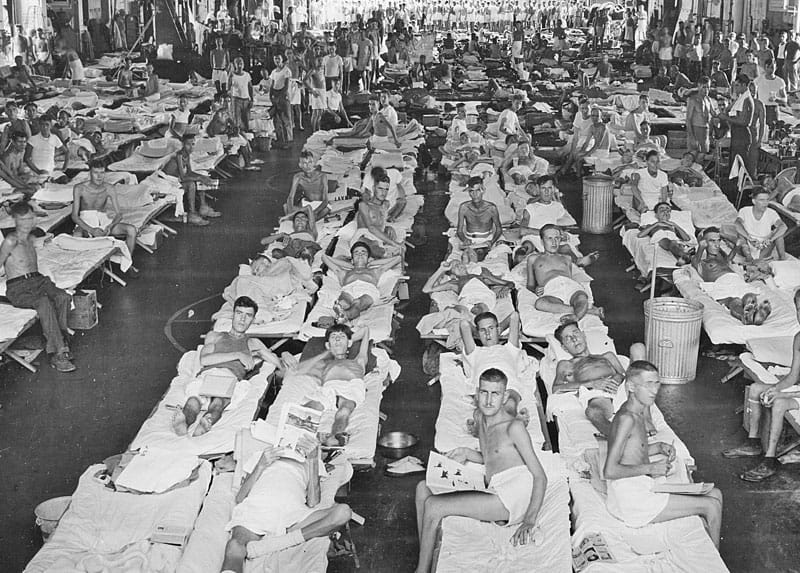
Wizardry Carpet in the Pacific Theater of Operation was finished up by September, 1946. The War Shipping Administration, made as a crisis measure during the pot of WWII, was at long last remained down, and its capacities were gotten back to the regular citizen Maritime Commission. A subset of Magic Carpet, named Operation Santa Claus, planned to get back however many qualified soldiers as would be prudent as expected for Christmas, 1945. December, 1945, was the pinnacle month of the whole sealift, with the quantity of returning staff spiking from the month to month normal of 435,000, to 700,000 from simply the Pacific alone.
Shockingly, upwards of 250,000 returning servicemen were abandoned on the East and West Coasts, incapable to arrive at their homes home because of the mother of all rail jams – back when rail routes were the essential method of significant distance travel. Luckily, a large number of regular people opened their hearts and homes, inviting servicemen to go along with them for Christmas. They probably won’t have delighted in the glow of their own families, however they appreciated the glow of outsiders who made them a piece of their family that day.
Bringing Our Boys Home While Sending Their Boys Back
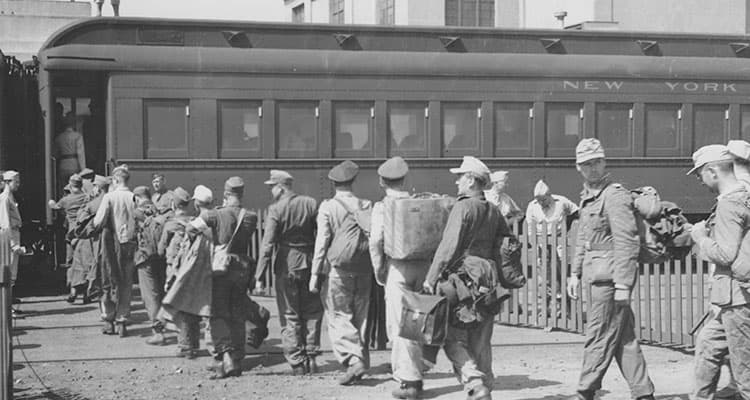
Instances of liberality at Christmastime, 1945, proliferated, including a driver to who took 35 soldiers from Denver to Dallas and focuses between. A Los Angeles cabbie drove 6 servicemen right to Chicago, while another LA cabbie raised the stakes, and shipped 6 returning saints to New York City. In any event, for the individuals who spent Christmas abandoned in sleeping enclosure, the response of one returning private best caught the disposition, taking note of that basically contacting America’s dirt indeed was: “the best Christmas present a man could have”.
The development of staff during Magic Carpet was bi-directional. Not exclusively were Americans being dispatched from around the planet back to the US toward the finish of WWII, however German, Italian, and Japanese POWs were likewise being delivered back to their homes from imprisonment in the US. In one full circle, the USS Wasp moved 1200 Italian POWs from the US to Naples, and the next day cruised back to the US, conveying 4000 American servicemen.
A Stunning Success
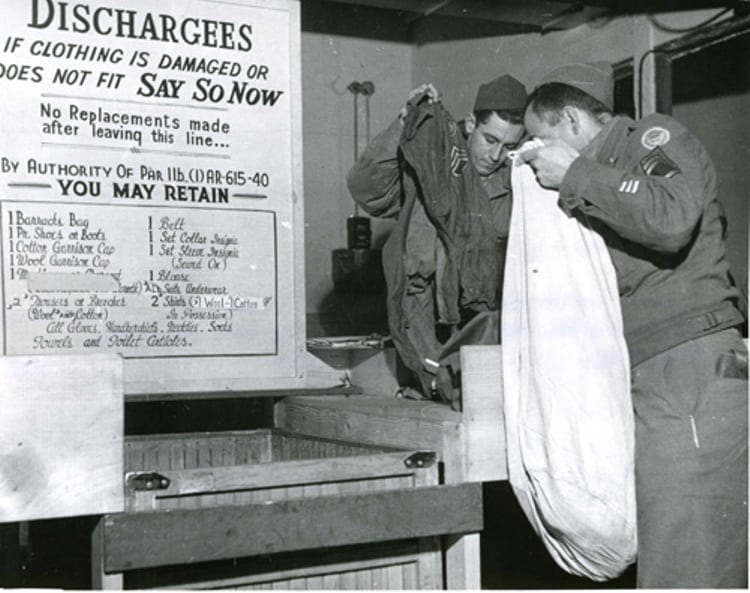
American occupation powers were likewise carried to Germany, Japan, Korea, and China. At the same time, Chinese soldiers were sealifted from southern to northern China to incapacitate the Japanese, just as contradict Chinese socialists in the district. All the while, a huge number of incapacitated Japanese were dispatched from everywhere eastern and southern Asia, just as various Pacific islands, back to the Japanese home islands.
It had required almost four years for America to send more than 8,000,000 servicemen abroad during WWII. It would require just 14 months to switch the deluge, and return the vast majority of them back home. So, Operation Magic Carpet was a colossal, and tremendously fruitful, accomplishment of coordinations, arranging, and execution – a fitting finish to America’s involvement with WWII.